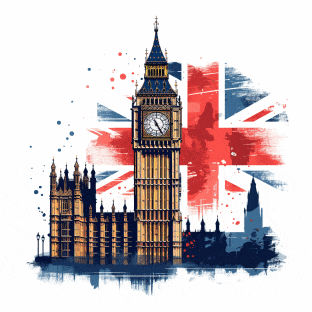Understanding colors is an essential part of learning English vocabulary, especially for beginners and intermediate learners. Colors can describe objects, express emotions, and even represent identities. Mastering this aspect of language not only enhances your descriptive abilities but also deepens your appreciation of the language.
The Importance of Colors in English
Colors play a vital role in communication. They are not just aesthetic elements but are used in phrases and idioms, making them an integral part of everyday language. For example, being “green with envy” means feeling a great sense of jealousy, and seeing “red” often indicates anger. By learning these expressions, you can improve your understanding of nuanced English conversations.
What's your English level?
Discover your level now: A1/A2/B1/B2/C1/C2 and GET your certificate!
Basic Color Vocabulary
Before diving into the complexities of color usage in language, let’s review the basic color vocabulary. Whether you’re shopping for clothes or describing the weather, knowing these basic colors will be incredibly useful:
| Color | Example in a Sentence |
|---|---|
| Red | The apple is red. |
| Blue | The sky is blue. |
| Yellow | The sunflowers are yellow. |
| Green | The leaves are green. |
| Black | He wore a black suit. |
| White | The snow is white. |
Using Colors in Idioms and Expressions
Colors are frequently used in idiomatic expressions. These expressions don’t literally refer to the color but convey a different meaning altogether. Learning them can be quite helpful:
- “Once in a blue moon” – Means something happens very rarely.
- “Caught red-handed” – Means to be caught in the act of doing something wrong.
- “Feeling blue” – Suggests sadness or depression.
These expressions enrich your vocabulary and make your speech more expressive.
Advanced Color Vocabulary and Descriptions
As you progress, you might find it useful to learn advanced color names and descriptions. This is especially useful in fields like art, design, and fashion. Consider these shades: azure, burgundy, chartreuse, and teal. Each of these colors can be used to describe specific hues and tones that the basic color terms cannot.
The Influence of Colors on Emotion and Perception
Colors can affect our mood and perceptions. This is known as color psychology. For instance:
- Red is often associated with energy, passion, and danger.
- Blue tends to evoke calmness and serenity.
- Yellow can stimulate feelings of happiness and vitality.
Understanding these associations can enhance your comprehension of language contexts and cultural nuances.
Practical Tips for Learning Colors in English
To effectively learn colors in English, try incorporating the following tips:
- Use flashcards – Create flashcards with different colors and practice regularly.
- Learn through art – Try painting or coloring activities while naming each color.
- Watch English movies or videos – Pay attention to how colors are described in scenes.
For more thorough information on color usage, you can explore websites such as the Cambridge Dictionary or the British Council.
Exploring Color Associations in Language
Colors are not only used for visual descriptions but are also deeply embedded in our language to convey emotions and concepts. Let’s delve into how colors are associated with specific meanings in various contexts:
1. Cultural Significance: Different cultures attribute symbolic meanings to colors. For example, in Western cultures, white is often associated with purity and weddings, while in Asian cultures, it symbolizes mourning.
2. Marketing and Branding: Companies carefully select colors for their logos and products to evoke desired emotions in consumers. For instance, red is often used to create a sense of urgency or excitement.
3. Emotional Responses: Individuals can have personal associations with colors based on their experiences. Some may find comfort in shades of blue, while others may feel energized by vibrant yellows.
Case Study: The Impact of Color in Marketing
A famous case study on color psychology in marketing involved a change in the ‘Buy Now’ button color on a website. By switching from green to red, the company experienced a significant increase in conversion rates. This demonstrates the powerful influence colors can have on consumer behavior and decision-making.
Color-Related Q&A
Q: How can I choose the right colors for a room to create a specific atmosphere?
A: Consider the mood you want to evoke. Warm colors like red and orange can create a cozy ambiance, while cool colors like blue and green promote relaxation. Use color palettes to ensure harmony in your decor.
Exploring Color Trends
Colors trends change across various industries such as fashion, interior design, and graphic design. Staying updated on color forecasts can provide insights into upcoming trends and help you stay ahead in your field.
Conclusion
Mastering the vocabulary of colors in English can significantly enhance your descriptive ability and understanding of the language. It opens up opportunities to express yourself more vividly and comprehend cultural meanings more deeply. Start by learning basic color names and progress to more advanced expressions and idioms as you become more confident.




